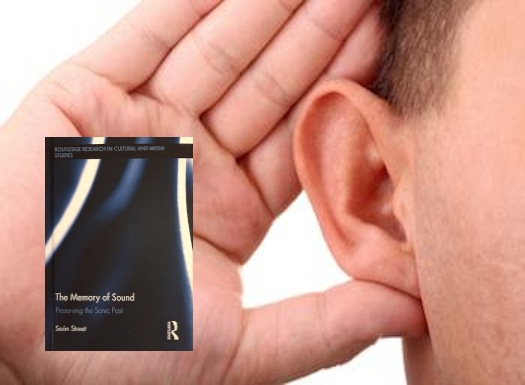Sean Street’s latest publication helps unlock the sonic past and reminds us how important it is to preserve our recollections of sound.
The Memory of Sound is reviewed by Steve Ahern.
The transient sounds of the radio, the sounds of the kitchen or the street are normally pushed back into the far reaches of our memory, relegated to secondary importance in our minds behind vision, smell and other sensory memory triggers.
Sean Street quotes Shelley to make the point that sound and music still hold a powerful place in our memories, if only we can unlock them:
Vibrates in the memory…
Media is now more visual than ever, but, harking back to Simonides, the founder of the art of memory in 556BC, Street contends that auditory memory is as important now as it was in ancient times. “A trained memory, before the invention of printing was vital,” and today, when some suspect that “the accessing of facts through the internet will lead to a further reduction in mnemonic powers” he asserts that memory is still important to individuals and society.
There are different kinds of memory. Some memories are triggered by pictures in photographs, in the mind, or on a screen. Other memories, at a deeper subconscious level, are triggered by smells. Deeper still are the memories triggered by sound, he asserts in the book, published in the Routledge Culture and Media Studies research series.
Street explores the connection between sound, in particular the sounds of the radio, and recollection. He reminds readers to train their mind to remember and recall information by using triggers such as memories of sound. He asks “are we in danger of damaging long-term memory by the ability we now possess to access information within seconds on a need to know basis via the internet?”
I tried out Street’s auditory memory exercise and found myself remembering being four years old, lying on the lounge of my family home, listening to the blue and white mantle radio playing Kindergarten of the Air, while my mother moved in and out to check on me while doing her chores. It was a pleasant recollection, and the more I thought of it, the more details about the rooms of our house and the activities of our street came back to me.
Sean Street’s book puts radio memories at the centre of a historical analysis of modern times, where “the broadcasts lay at the centre of a sonic pool, and the ripples of memory spread out from the centre.” He quotes various examples from the BBC archives, and also goes back further in history, to times before the invention of radio, where songs and rhymes helped professional storytellers and Shakespearean actors remember their lines and place ideas into the minds of their audiences. His examples illustrate how rhythm, rhyme and repetition help us to remember things, and he references a range of radio documentaries about memory to support his exploration of “the archive of the mind.”
“As a species we come out of an oral tradition, and radio – audio – remains the pen through which that tradition can be perpetuated and enhanced.”
Auditory memory, like a muscle, needs to be maintained and exercised he argues, because sound is an important key for preserving the mind’s potential.
As the book continues, it goes deeper into the nuances of auditory memory, exploring linguistic memories, story telling phrases, reading styles and other vocal variations in audio art and story telling.
He uses the powerful phrase “an ear-witness account” when exploring whether audio news faithfully reproduces the facts, or simply triggers subjective memories in the listener.
A good interviewer, who can draw out their subject can expand the narrative to include other elements in the memory picture, “leading to a multi-layered versioning of the story.”
As well as news, Street explores the power of sound in advertising and examines how deeply into the brain advertising jingles penetrate. He looks at sports calls, the car radio environment, radio plays and many other forms of radio.
In later chapters he uses the understanding of layered audio memory to examine how some student documentaries he was critiquing unlocked experiences deep in his mind that made the docos more powerful to him as a listener.
Sean Street’s The Memory of Sound is a book for radio lovers and for anyone who ponders the importance of memory, audio and history in our modern society. It’s well written, thoughtful and a good read.
Street, Sean, The Memory of Sound: Preserving the Sonic Past, Routledge UK, 2015, ISBN 978-0-415-71398-6. Also available in eBook.

